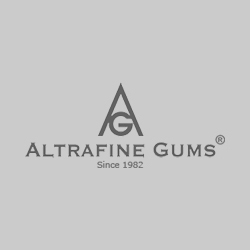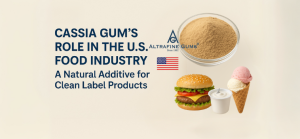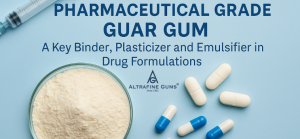
Safety and Efficacy of Cassia Gum for the Pet Food Industry
Table of Contents
The cassia obtusifolia, also referred to as cassia tora is a weed crop plant belonging to the Caesalpinaceae family. The plant mostly occurs in India, Nepal, china, Pakistan, Afganistan, mynmar and may also be found in Bhutan. The product is manufactured through grinding the cassia tora seeds. It is now a recognized food additive containing repeating units of galactose and mannose in a ratio of 5:1 respectively.
Currently, the Indian sub continent is the biggest manufacturer and exporter of the cassia gum powder. The powder is increasing in demand across the globe due to increasing applications in the food and feed industry as well as the beverage industry.
Cassia gum is currently authorized in feed with moisture content less than 12% as an emulsifying and stabilizing agent, thickener and gelling agent. The gum is also authorized for similar technological purposes in some food stuffs such as edible ice; dairy based desserts, fermented milk products, cheese, dressings and dehydrated soups.
According to the European food safety authority (EFSA) the cassia gum is used in combination with other gelling agents such as the kappa- carrageenan or the Xanthan gum during manufacture of the pet foods.
Anthraquinones content
The cassia gum is recognized to contain anthraquinones in it. This is a group of functional and diverse aromatic chemicals that are structurally related to anthracene, and has a parent structure 9, 10-dioxoanthracene. They occur naturally in the cassia species in free glycone and glycosylated forms.
The introduction of purification steps in production of cassia gum has resulted in considerable reduction in the anthraquinones concentration. The use of more specific analytical methods such as the high performance liquid chromatography (HPLC) has enabled separation of individual anthraquinones. This has helped in better purification procedures to be developed. The specifications of cassia gum food additive allow a maximum content of total anthraquinones at 0.5mg/kg which is at the detection limit.
Stability and Homogeneity
Cassia gum powder is used as a food additive in combination with other gums in order to obtain the optimal gelling and stability. Research was conducted on the stability of the gel over a period of three months for canned dog food and showed no significant losses of gel strength.
Bio Availability
The anthraquinones present in the cassia gum are considered to be poorly bio available and hence minimal side effects to pet animals. It is also thought that where a fraction is absorbed, they undergo liver oxidative and conjugative bio transformation and finally excreted by the body.
Efficacy
Research has been done on the efficacy of the cassia gum powder, by studying the gel strength values of the complete canned dog food. It was observed after three months of storage that the products remains stable and it has no effect on other product ingredients hence remains very effective.
Safety to Pet Animals
Research has concluded that only semi refined cassia gum that meets specifications of cassia gum as a pet food additive should be used in the manufacturing of pet foods. The maximum allowable content should also be maintained as 13200 mg/kg complete feed.






